Hands can be one one of the hardest and most frustrating things to draw. This can cause artists to avoid them.
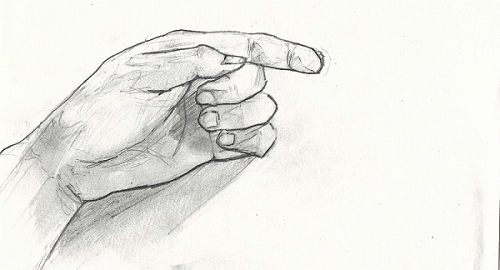
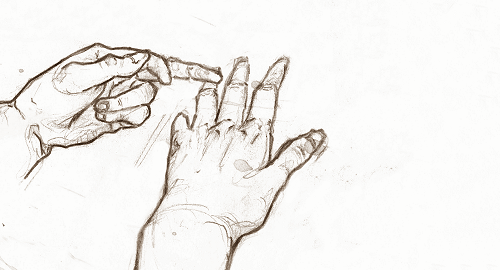
Why are hands so difficult to draw?
They're a very intricate part of our body. You're so familiar with hands that even the smallest mistakes can make them look off, especially when trying to draw them in proportion with a body.
How to draw a hand
I'm no master but I think I've gotten the hang of drawing hands. This post was inspired by the amazing guide for drawing eyes by @fairytalelife! If you've yet to read it check it out!
The key to learning to draw hands is to draw hands, a lot of hands.
This is the same for learning to draw anything. Draw it. Then draw it again, again and again. Draw the subject in different positions. Consider the measurements. Consider the form.
You have two fine subjects for studying at hand (pun intended) so use them! Observe your own hands and learn from them. When you've grown bored of them draw other people's hands!
- Construction is important when drawing. Never ever start from the details!
- Think in (three dimensional) shapes! Try to really feel the form of the hands.
- Generally, the more detail you add the older the hands will look! The same goes for faces.
Below is the picture of what I was drawing.
I did not draw from the picture however and I'd advice to draw as much from life as possible!
Pictures are flat and won't teach you to understand form well!
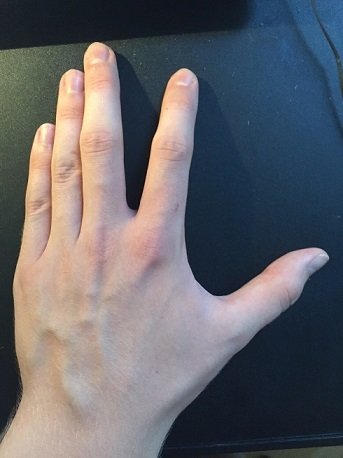
As you can (probably) see, that is a guy's hand. It's not a hairy and square-y lumberjack's hand but a guy's hand nonetheless.
The main difference between a man's and a woman's hand is that the woman's is generally more delicate and slim with smaller bones, rounder shapes and less broad fingers.
Also notice that hands curve a lot! It's not very noticeable in this position but the hollow of the palm and the curving back are important features to keep in mind when drawing.
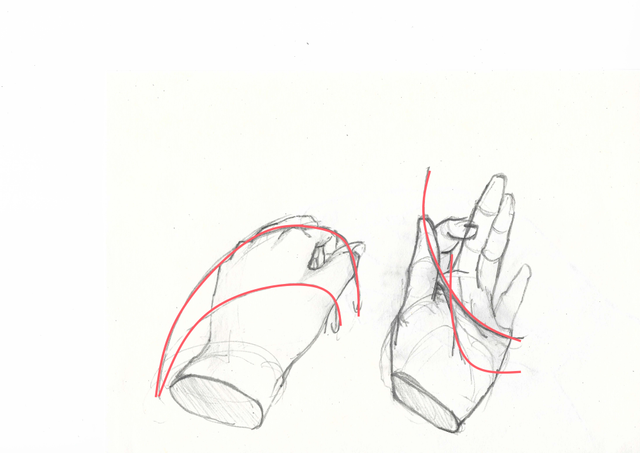
Above is a quick demonstration of what I mean.
First you have to get a feeling for what you're drawing.
If you make this step too stiff your end result might look stiff too! You don't want to press your pen too hard as these lines are for guiding your construction!
I drew a curved (!) line roughly where the fingertips would be (red). Another line for where the base of the hand is (blue). And a line for where the thumb would be (yellow).
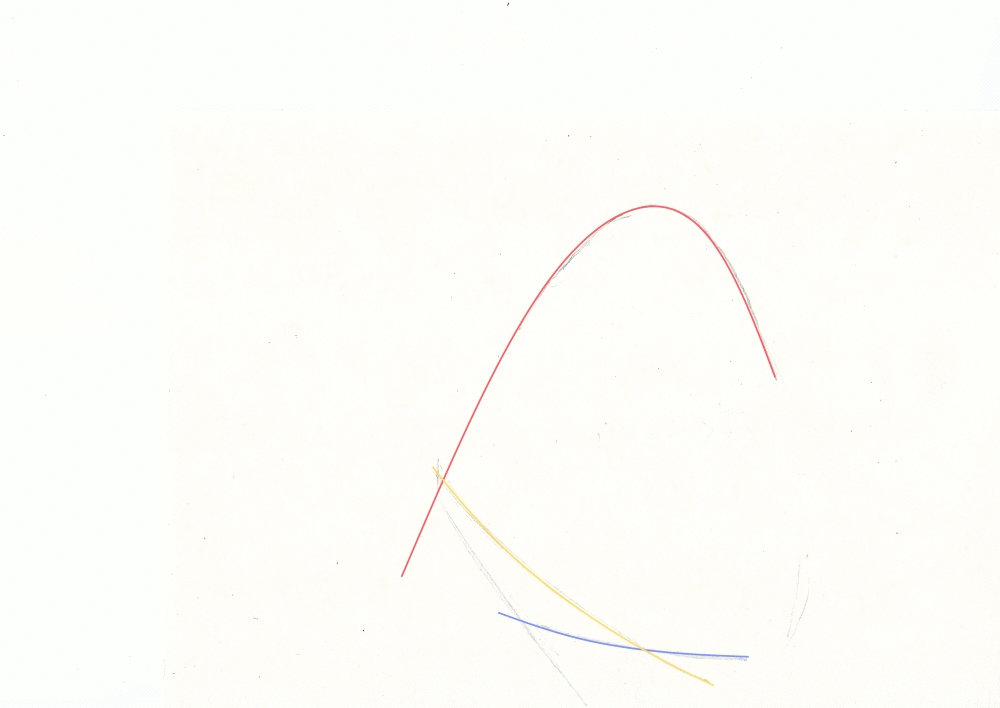
Next step is to add landmarks.
I added another curved (!) line for where the knuckles that connect the fingers and the hand are (green). Lines for the edges of the fingers and the tips. A rough outline for the thumb based on the green and yellow lines.
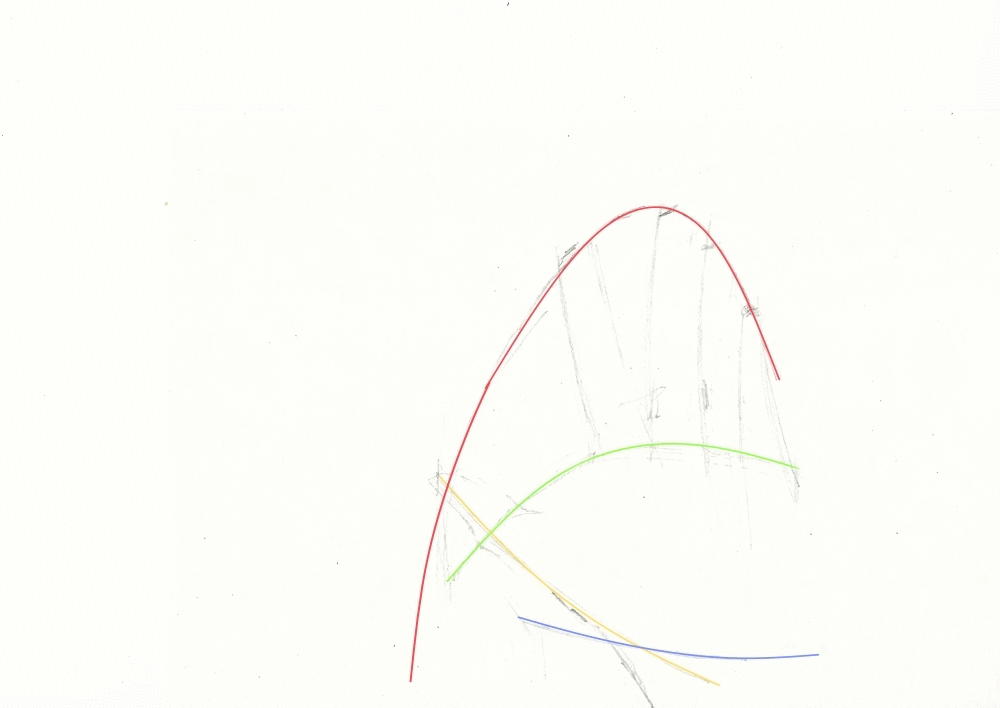
I then added in the rest of the outlines.
You want all of these to be soft. We're still constructing. Try not to get stuck with the crude outlines!
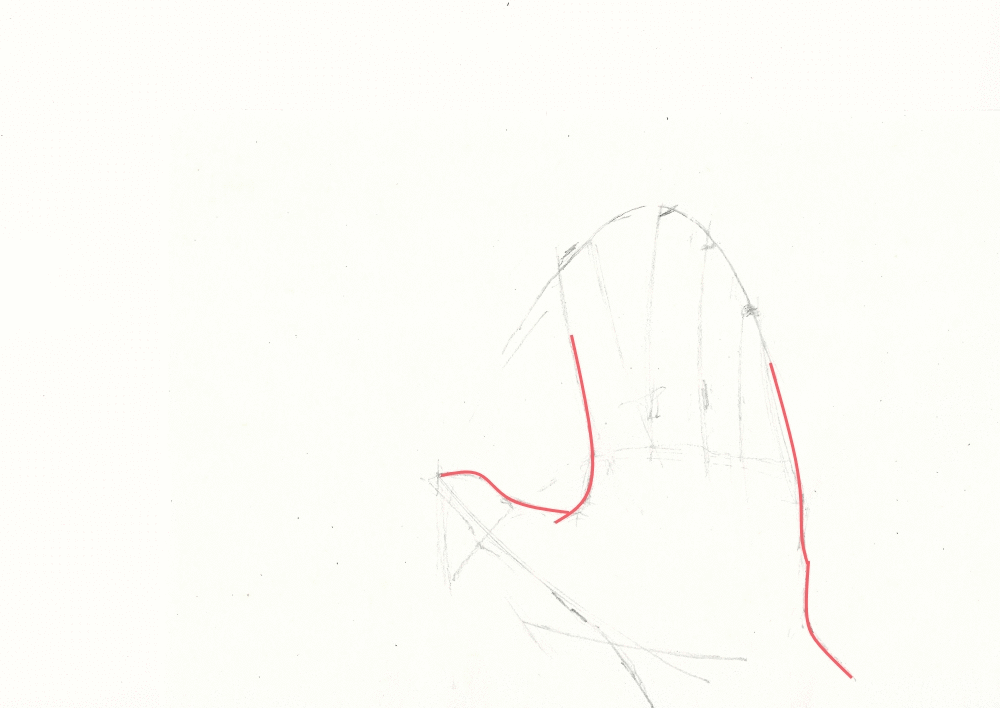
Occasionally turn your drawing upside down, you might be surprised by how you can suddenly see how wonky your drawing has become!
Fingers can be tough to draw. Contrary to what some seem to think they curve where the finger bones are and bulge out where the joints are.
To make it easier, think of them as three tubes connected to each other with rings or fat lumps in-between them.
I drew circles below where the joints are to demonstrate what I mean.
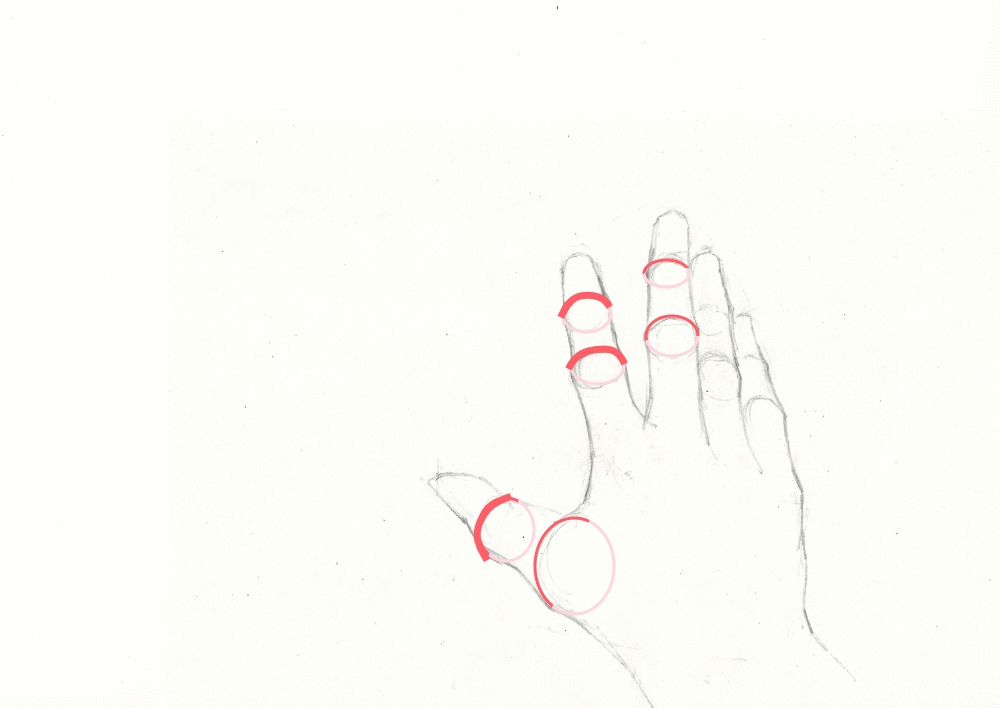
Notice how the fingers are more bulky where the joints are. Notice also how the individual fingers' joints aren't at the same level with each other.
I drew the curved lines again to show what I mean.
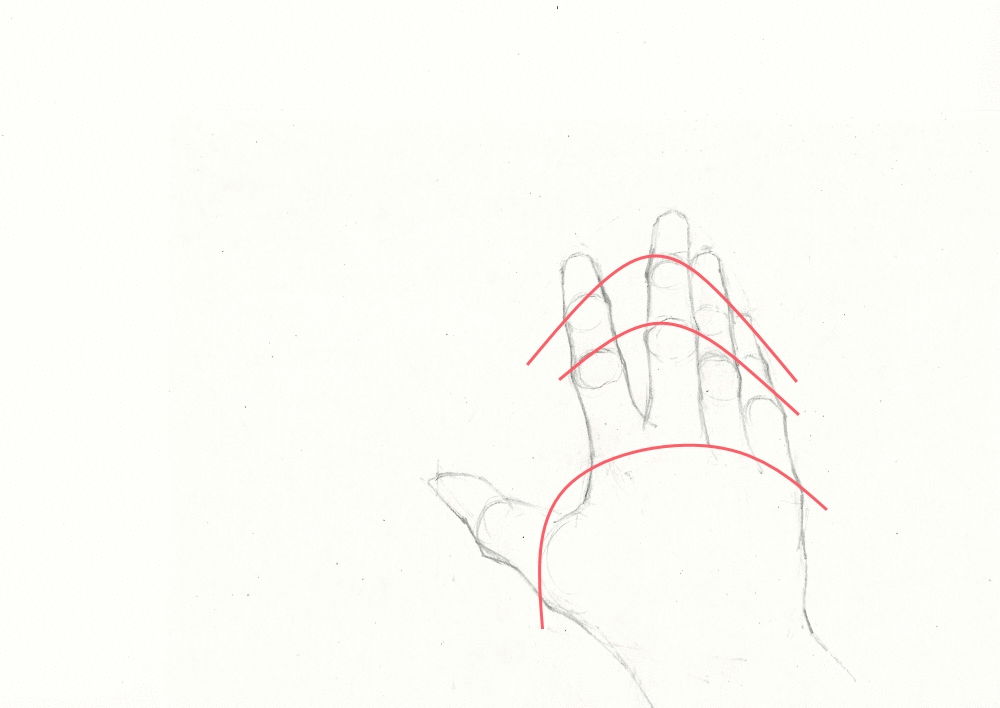
The index and ring finger are roughly the same length (though they can alternate quite a bit) while the middle finger is the longest.
The distance between the end of the finger and second joint is the same as the distance between the second joint and the fingertip.

The pinky can just reach third joint of the ring finger.

It might help to think of the hand in these shapes sometimes. (It's like a mitten except that the index finger is separated. The middle, ring finger and pinky are quite often together.)
From the middle finger you can measure the length of the hand. The part between the middle and the ring finger roughly divides the back of the hand in half.
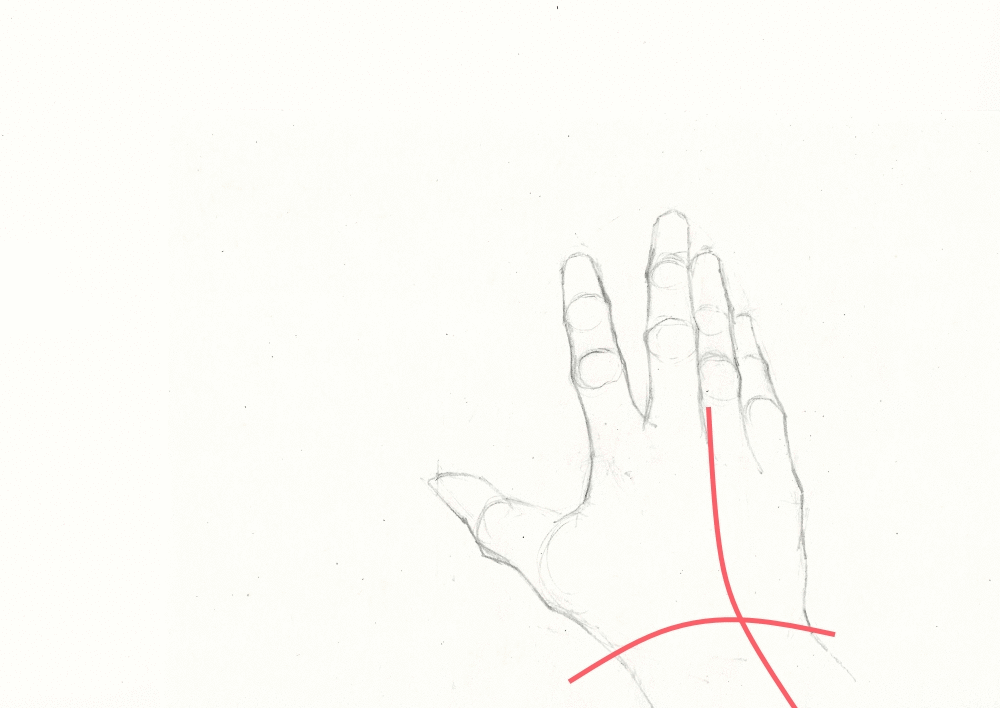
The distance between the first joint of the middle finger and the fingertip is the same as the distance between the first joint and the bottom of the hand where it meets the wrist.
The thumb can just about reach the second joint of the index finger.
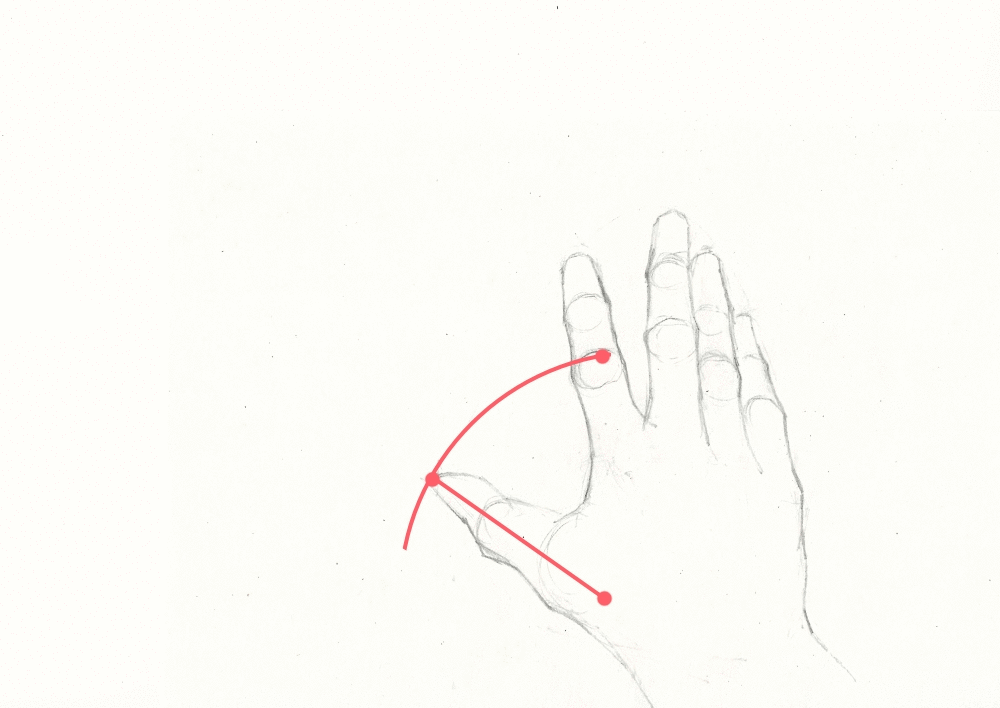
Quick tips for lines:
- Softer, thinner when two soft forms are pushing against each other
- Darker, thicker lines the closer the subject
- Darker, thicker lines the more the subject is in shadow and vice versa
- Less detail the further the subject
Last I started adding the details based on the construction. The best way to do this part is to look at your hands and draw what you see! The most important is for you to learn to construct the hand and learn it's measurements.
I understand that this is quite
"How to draw an owl: Draw two circles then draw the rest of the f***ing owl" -esque.
However, the only way for you to learn to draw in the end is to draw a whole lot. I don't even know what I'm doing in this part. I'm just softly shading in what I see while looking at my hand. The knuckles are elevated so the part where their shadows drop are darker here.
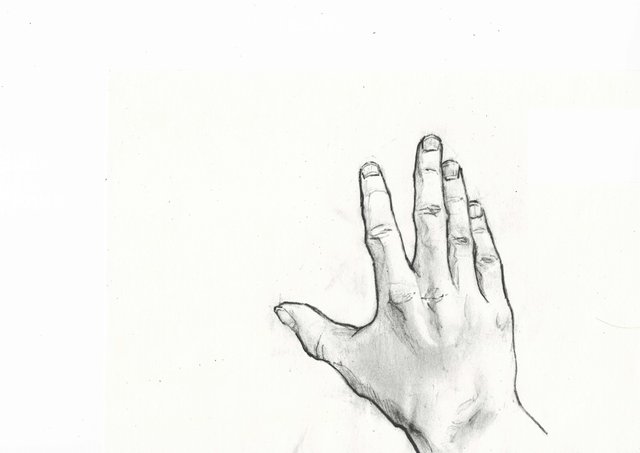
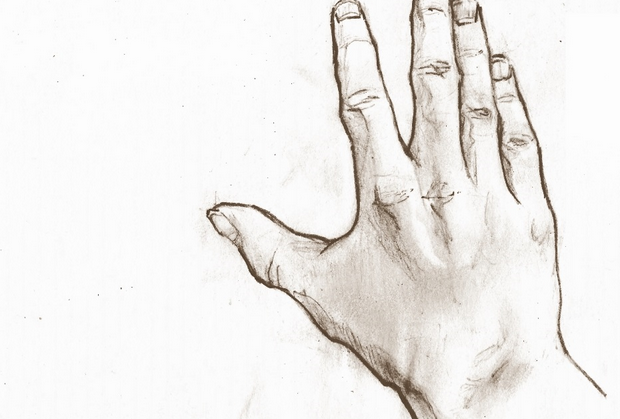
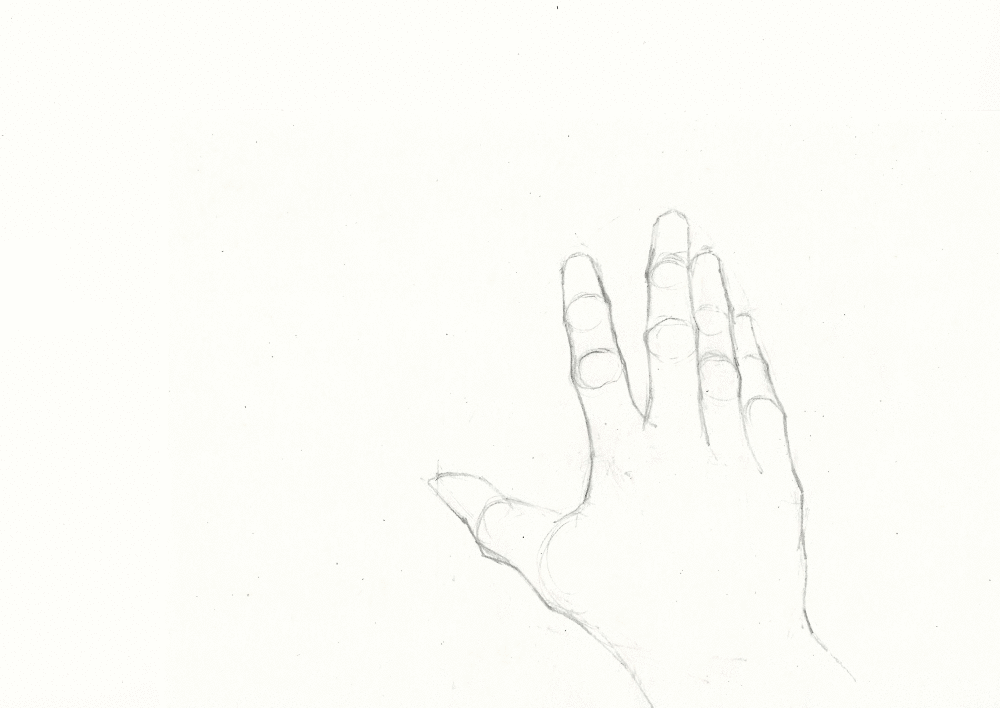
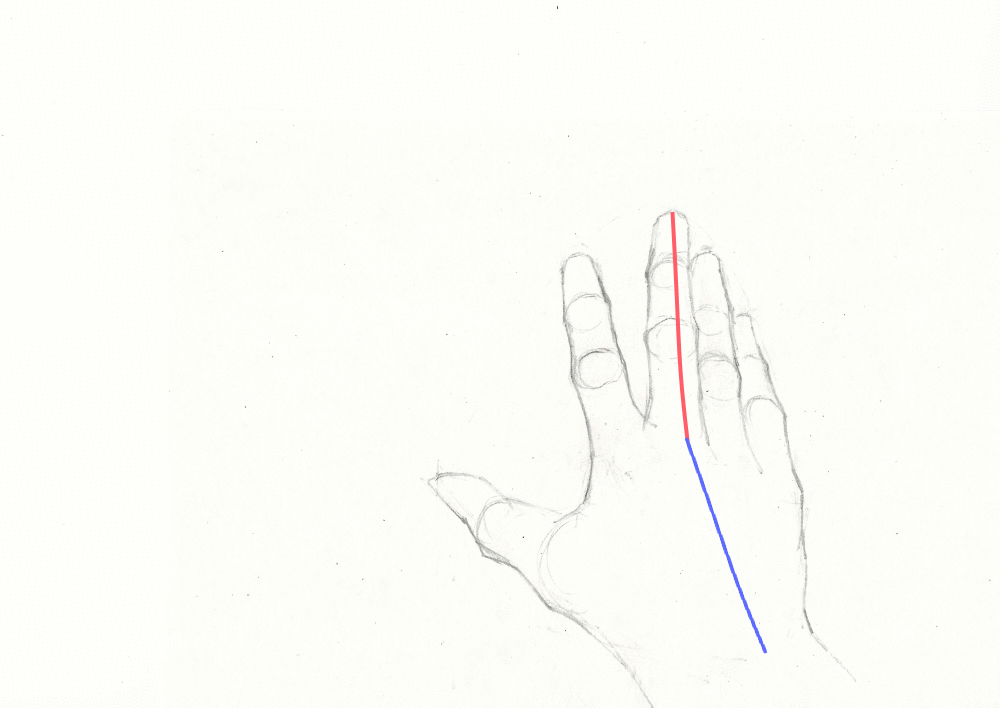
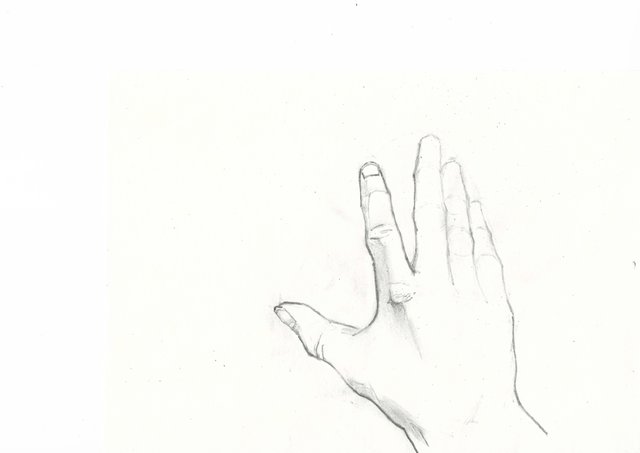
You're quite good at drawing! How long for have you been at it? I realize "natural talent" is often thrown around whenever someone seems to be able to draw but I believe it's not real. Sure, I think some might have a degree of natural disposition towards it but like you said in the end it's all about hard work. Keep making posts!
Downvoting a post can decrease pending rewards and make it less visible. Common reasons:
Submit
Thank you @fampai! Well, like many I've been drawing for my own pleasure since I was a kid. I'd often stay in and draw instead of going outside. I only got serious about it a year or so ago. I've had periods when I haven't drawn much as I have a plethora of other hobbies.
I think some can be talented at drawing. Just as some are mathematical geniuses.
Have you happened to see the movie Gattaca? (If not, watch it!). I think of it like that. Maybe there is someone with an eidetic memory and a real knack for drawing but if you work hard you can get where you want. If you purely think of drawing as some contest (it really isn't) you probably don't really like it. I enjoy various styles ranging from what one could call "childish" to realism to more experimental ones.
Downvoting a post can decrease pending rewards and make it less visible. Common reasons:
Submit
Wow! I'm no artist but great looking hands. Thank you for this tutorial, the gifs were a really nice touch.
Downvoting a post can decrease pending rewards and make it less visible. Common reasons:
Submit
Thank you!
Downvoting a post can decrease pending rewards and make it less visible. Common reasons:
Submit
:D
Great guide nonetheless. Its true you must keep drawing and then will you learn only.
Downvoting a post can decrease pending rewards and make it less visible. Common reasons:
Submit
Thanks a lot @alexanderem! Yeah practice is the most important.
Downvoting a post can decrease pending rewards and make it less visible. Common reasons:
Submit
I dont know what im doing wrong but my drawings never look that good :(
How do i think in 3d? I just cant seem to do it.
Downvoting a post can decrease pending rewards and make it less visible. Common reasons:
Submit
Study anatomy and draw from life. You have to grind fundamentals a lot, draw basic 3 dimensional objects from different angles and study perspective. That's about it, there's no magic here really.
Downvoting a post can decrease pending rewards and make it less visible. Common reasons:
Submit
great tutorial, hands are hard to draw! thank you!
Downvoting a post can decrease pending rewards and make it less visible. Common reasons:
Submit
Thanks @hauanna! :)
Downvoting a post can decrease pending rewards and make it less visible. Common reasons:
Submit
check this out
Downvoting a post can decrease pending rewards and make it less visible. Common reasons:
Submit